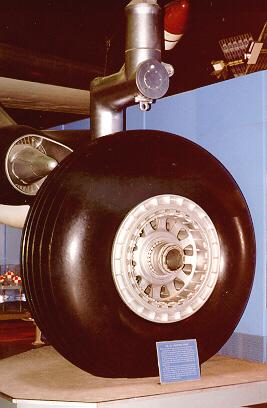

Production Convair B-36 Is Completed
|
JANUARY 1954 . In 1941 when Britain's survival appeared doubtful, the AAF outlined a requirement for a bomber capable of bombing European targets from the Western Hemisphere. From this evolved the giant Convair B-36. Due to the improving war situation and a lowered priority of the B-36 development program, the XB-36 did not make its first flight until Aug. 1946. Deliveries to SAC of B-36s with a range of more than 7,000 miles began in 1948. The B-36 had a normal crew of 15, although the strategic reconnaissance version carried a crew of 22 plus camera equipment and 14,000 pounds of photo flash bombs for night photography. The B-36 became the subject of sometimes-bitter inter-service controversy when anonymous documents were circulated alleging corruption in the selection of the aircraft and questioning both its value and the USAF philosophy of strategic bombing. |
 |
 |
However, a congressional investigation in 1949 vindicated the original decision to buy the B-36 and it remained in production until 1954 with a total purchase of 385 planes. Its unofficial nickname of "Peacemaker" was appropriate for although the B-36 never dropped a bomb in combat, its range and nuclear weapons capability made it a powerful deterrent to a possible third world war. XB-36 Landing Gear When the XB-36 was designed during World War II, specifications called for two main landing gear wheels to be equipped with the largest aircraft tires produced in the U.S. to that time. Manufactured by Goodyear, the tires were 110" in diameter and 36" in width. Weighing 1,320 pounds, each tire was 30% nylon cord construction, the equivalent of approximately 60 automobile tires or 12,700 pairs of nylon hose. Because of the enormous pressures imposed by the XB-36 upon concrete runways when equipped with single wheels, it could take-off and land safely at very few airfields. As a result, the single-wheel landing gear was redesigned and production B-36s incorporated four smaller wheels and tires on each of its main landing gears. |
| ŠAvStop Online Magazine Contact Us Return To News |